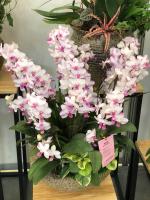Introduction
Gardening can be an enjoyable and fulfilling hobby, especially when we see our plants thriving with lush foliage and vibrant blooms. However, it can be frustrating when our pot plant fails to bud despite our efforts to care for it. In this article, we will explore some possible reasons why your pot plant is not budding and suggest ways to address the issue.
Lighting Conditions
One of the primary reasons why pot plants may not flower is a lack of sufficient sunlight. Most flowering plants require adequate light to produce buds, and if your pot plant is not getting enough light, it may remain in a vegetative state, and you may not see any flowers. Therefore, it is crucial to ensure that your plant is placed in an area that receives enough sunlight or artificial light. If you have an indoor garden, make sure to use grow lights that emit wavelengths that support flowering.
Watering and Nutrient Issues
Another factor that can affect the blooming of your pot plant is incorrect watering or inadequate nutrition. Overwatering or under watering can stunt the growth of your plant and prevent it from flowering. On the other hand, if your plant lacks essential nutrients such as nitrogen, phosphorus, and potassium, it may not have the energy to produce buds. Thus, it is critical to water your pot plant correctly and use a suitable fertilizer to ensure that it receives the necessary nutrients in the proper proportion.
Temperature and Humidity
Temperature and humidity are other essential factors that can influence the flowering of your pot plant. Some flowering plants thrive in warm and humid conditions, while others prefer cooler and drier environments. Therefore, it is essential to know the specific temperature and humidity requirements of your plant species and provide the ideal conditions. If you have an indoor garden, you can use a humidifier or a dehumidifier to regulate the humidity level, depending on the needs of your plants.
Pruning and Deadheading
Pruning and deadheading are essential techniques that can promote flowering in some plants. Deadheading involves removing spent blooms or buds, which encourages the plant to produce new flowers. Pruning, on the other hand, involves cutting off the tip of the stem or branches to encourage branching and promote the production of more flowers. If your pot plant is not budding, you may want to consider using these techniques to stimulate blooming.
Conclusion
In conclusion, there could be several reasons why your pot plant is not budding, ranging from inadequate lighting to improper watering or nutrient deficiencies, and temperature and humidity issues. By identifying and addressing these factors, you can help your plant to thrive, produce beautiful blooms, and enhance the overall look of your garden. Remember to be patient and persistent in your efforts, and consult a gardening expert if you need further assistance.

 how many times do yo...
how many times do yo... how many planted tre...
how many planted tre... how many pine trees ...
how many pine trees ... how many pecan trees...
how many pecan trees... how many plants comp...
how many plants comp... how many plants can ...
how many plants can ... how many plants and ...
how many plants and ... how many pepper plan...
how many pepper plan...
































